I am trying to use Renderer.selectRootElement to get some elements from my Component, as described here.
Everything works fine, unless I select only one element (plnkr).
As you can see, I have created a component:
export class ExampleComponent implements OnInit{
@Input() start: any;
@Input() end: any;
constructor(public _renderer:Renderer){
};
ngOnChanges(){
}
ngOnInit(){
console.log("NG ON CHAN START DATE",this.start);
console.log("NG ON INIT END DATE",this.end);
var container = this._renderer.selectRootElement('.container');
console.log(container);
var inner1 = this._renderer.selectRootElement('.inner1');
console.log(inner1);
var inner2 = this._renderer.selectRootElement('.inner2');
console.log(inner2);
}
}
When I try to run this, I have an error of :
EXCEPTION: The selector ".inner1" did not match any elements in [{{exampleData.end}} in MainViewComponent@3:65]
(however, in my app, when only the first container is found, then none others are found).
Any ideas where does this come from?
UPDATE
I found out that the directive is not invoked fully - only div with class container gets added to the HTML.
